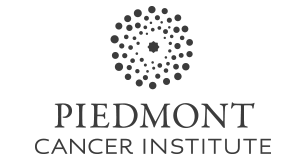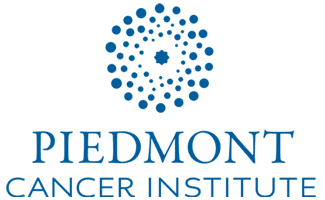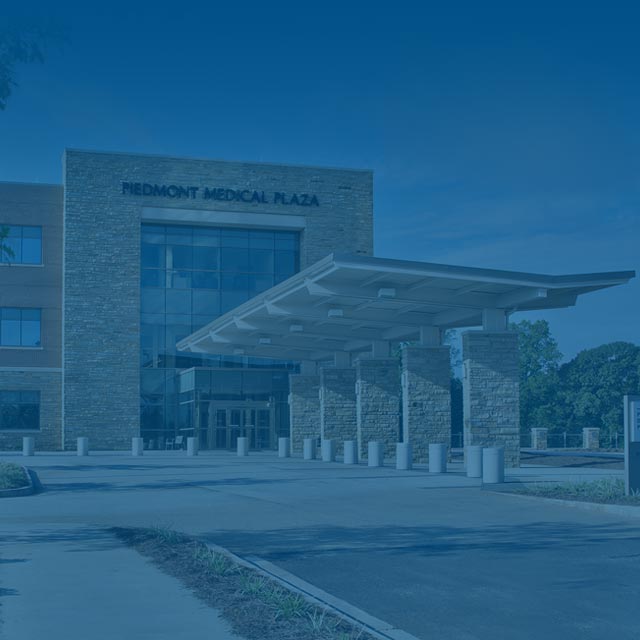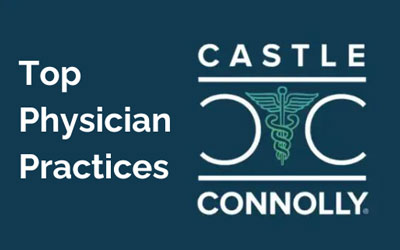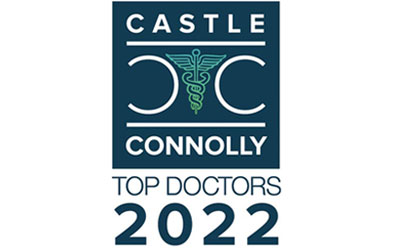Thyroid Cancer
General Information About Thyroid Cancer
Key Points for This Section
- Thyroid cancer is a disease in which malignant (cancer) cells form in the tissues of the thyroid gland.
- Age, gender, and exposure to radiation can affect the risk of developing thyroid cancer.
- Medullary thyroid cancer is sometimes caused by a change in a gene that is passed from parent to child.
- Possible signs of thyroid cancer include a swelling or lump in the neck.
- Tests that examine the thyroid, neck, and blood are used to detect (find) and diagnose thyroid cancer.
- Certain factors affect prognosis (chance of recovery) and treatment options.
Thyroid cancer is a disease in which malignant (cancer) cells form in the tissues of the thyroid gland.
The thyroid is a gland at the base of the throat near the trachea (windpipe). It is shaped like a butterfly, with a right lobe and a left lobe. The isthmus, a thin piece of tissue, connects the two lobes. A healthy thyroid is a little larger than a quarter. It usually cannot be felt through the skin. The thyroid uses iodine, a mineral found in some foods and in iodized salt, to help make several hormones.Thyroid hormones do the following:
- Control heart rate, body temperature, and how quickly food is changed into energy (metabolism).
- Control the amount of calcium in the blood.
There are four main types of thyroid cancer:
- Papillary thyroid cancer: The most common type of thyroid cancer.
- Follicular thyroid cancer. Hürthle cell carcinoma is a form of follicular thyroid cancer and is treated the same way.
- Medullary thyroid cancer.
- Anaplastic thyroid cancer.
See the PDQ summary on Unusual Cancers of Childhood for information about childhood thyroid cancer.
Age, gender, and exposure to radiation can affect the risk of developing thyroid cancer.
Anything that increases your risk of getting a disease is called a risk factor. Having a risk factor does not mean that you will get cancer; not having risk factors doesn’t mean that you will not get cancer. People who think they may be at risk should discuss this with their doctor. Risk factors for thyroid cancer include the following:
- Being between 25 and 65 years old.
- Being female.
- Being exposed to radiation to the head and neck as a child or being exposed to atomic bomb radiation. The cancer may occur as soon as 5 years after exposure.
- Having a history of goiter (enlarged thyroid).
- Having a family history of thyroid disease or thyroid cancer.
- Having certain genetic conditions such as familial medullary thyroid cancer (FMTC), multiple endocrine neoplasia type 2A syndrome, and multiple endocrine neoplasia type 2B syndrome.
- Being Asian.
Medullary thyroid cancer is sometimes caused by a change in a gene that is passed from parent to child.
The genes in cells carry hereditary information from parent to child. A certain change in a gene that is passed from parent to child (inherited) may cause medullary thyroid cancer. A test has been developed that can find the changed gene before medullary thyroid cancer appears. The patient is tested first to see if he or she has the changed gene. If the patient has it, other family members may also be tested. Family members, including young children, who have the changed gene can decrease the chance of developing medullary thyroid cancer by having a thyroidectomy (surgery to remove the thyroid).
Possible signs of thyroid cancer include a swelling or lump in the neck.
Thyroid cancer may not cause early symptoms. It is sometimes found during a routine physical exam. Symptoms may occur as the tumor gets bigger. Other conditions may cause the same symptoms. A doctor should be consulted if any of the following problems occur:
- A lump in the neck.
- Trouble breathing.
- Trouble swallowing.
- Hoarseness.
Tests that examine the thyroid, neck, and blood are used to detect (find) and diagnose thyroid cancer.
The following tests and procedures may be used:
- Physical exam and history: An exam of the body to check general signs of health, including checking for signs of disease, such as lumps or swelling in the neck, voice box, and lymph nodes, and anything else that seems unusual. A history of the patient’s health habits and past illnesses and treatments will also be taken.
- Laryngoscopy: A procedure in which the doctor checks the larynx (voice box) with a mirror or with a laryngoscope. A laryngoscope is a thin, tube-like instrument with a light and a lens for viewing. A thyroid tumor may press on vocal cords. The laryngoscopy is done to see if the vocal cords are moving normally.
- Blood hormone studies: A procedure in which a blood sample is checked to measure the amounts of certain hormones released into the blood by organs and tissues in the body. An unusual (higher or lower than normal) amount of a substance can be a sign of disease in the organ or tissue that makes it. The blood may be checked for abnormal levels of thyroid-stimulating hormone (TSH). TSH is made by the pituitary gland in the brain. It stimulates the release of thyroid hormone and controls how fast follicular thyroid cells grow. The blood may also be checked for high levels of the hormone calcitonin.
- Blood chemistry studies: A procedure in which a blood sample is checked to measure the amounts of certain substances, such as calcium, released into the blood by organs and tissues in the body. An unusual (higher or lower than normal) amount of a substance can be a sign of disease in the organ or tissue that makes it.
- Radioactive iodine scan (RAI scan): A procedure to find areas in the body where thyroid cancer cells may be dividing quickly. Radioactive iodine (RAI) is used because only thyroid cells take up iodine. A very small amount of RAI is swallowed, travels through the blood, and collects in thyroid tissue and thyroid cancer cells anywhere in the body. Abnormal thyroid cells take up less iodine than normal thyroid tissue. Areas that do not absorb the iodine normally (cold spots) show up lighter in the picture made by the scan. Cold spots can be either benign (not cancer) or malignant, so a biopsy is done to find out if they are cancer.
- Ultrasound exam: A procedure in which high-energy sound waves (ultrasound) are bounced off internal tissues or organs and make echoes. The echoes form a picture of body tissues called a sonogram. The picture can be printed to be looked at later. This procedure can show the size of a thyroid tumor and whether it is solid or a fluid -filled cyst. Ultrasound may be used to guide a fine-needle aspiration biopsy.
- CT scan (CAT scan): A procedure that makes a series of detailed pictures of areas inside the body, taken from different angles. The pictures are made by a computer linked to an x-ray machine. A dye may be injected into a vein or swallowed to help the organs or tissues show up more clearly. This procedure is also called computed tomography, computerized tomography, or computerized axial tomography.
- MRI (magnetic resonance imaging): A procedure that uses a magnet, radio waves, and a computer to make a series of detailed pictures of areas inside the body. This procedure is also called nuclear magnetic resonance imaging (NMRI).
- PET scan (positron emission tomography scan): A procedure to find malignant tumor cells in the body. A small amount of radioactive glucose (sugar) is injected into a vein. The PET scanner rotates around the body and makes a picture of where glucose is being used in the body. Malignant tumor cells show up brighter in the picture because they are more active and take up more glucose than normal cells do.
- Fine-needle aspiration biopsy of the thyroid: The removal of thyroid tissue using a thin needle. The needle is inserted through the skin into the thyroid. Several tissue samples are removed from different parts of the thyroid. A pathologist views the tissue samples under a microscope to look for cancer cells. Because the type of thyroid cancer can be hard to diagnose, patients should ask to have biopsy samples checked by a pathologist who has experience diagnosing thyroid cancer.
- Surgical biopsy: The removal of the thyroid nodule or one lobe of the thyroid during surgery so the cells and tissues can be viewed under a microscope by a pathologist to check for signs of cancer. Because the type of thyroid cancer can be hard to diagnose, patients should ask to have biopsy samples checked by a pathologist who has experience diagnosing thyroid cancer.
Certain factors affect prognosis (chance of recovery) and treatment options.
The prognosis (chance of recovery) and treatment options depend on the following:
- The age of the patient.
- The type of thyroid cancer.
- The stage of the cancer.
- The patient's general health.
- Whether the patient has multiple endocrine neoplasia type 2B (MEN 2B).
- Whether the cancer has just been diagnosed or has recurred (come back).
Stages of Thyroid Cancer
Key Points for This Section
- After thyroid cancer has been diagnosed, tests are done to find out if cancer cells have spread within the thyroid or to other parts of the body.
- There are three ways that cancer spreads in the body.
- The following stages are used for papillary and follicular thyroid cancer in patients younger than 45 years:
- Stage I
- Stage II
- The following stages are used for papillary and follicular thyroid cancer in patients 45 years and older:
- Stage I
- Stage II
- Stage III
- Stage IV
- The following stages are used for medullary thyroid cancer:
- Stage 0
- Stage I
- Stage II
- Stage III
- Stage IV
- Anaplastic thyroid cancer is considered stage IV thyroid cancer.
After thyroid cancer has been diagnosed, tests are done to find out if cancer cells have spread within the thyroid or to other parts of the body.
The process used to find out if cancer has spread within the thyroid or to other parts of the body is called staging. The information gathered from the staging process determines the stage of the disease. It is important to know the stage in order to plan treatment. The following tests and procedures may be used in the staging process:
- CT scan (CAT scan): A procedure that makes a series of detailed pictures of areas inside the body, taken from different angles. The pictures are made by a computer linked to an x-ray machine. A dye may be injected into a vein or swallowed to help the organs or tissues show up more clearly. This procedure is also called computed tomography, computerized tomography, or computerized axial tomography.
- MRI (magnetic resonance imaging): A procedure that uses a magnet, radio waves, and a computer to make a series of detailed pictures of areas inside the body. This procedure is also called nuclear magnetic resonance imaging (NMRI).
- Ultrasound exam: A procedure in which high-energy sound waves (ultrasound) are bounced off internal tissues or organs and make echoes. The echoes form a picture of body tissues called a sonogram. The picture can be printed to be looked at later.
- Radioactive iodine scan (RAI scan): A procedure to find areas in the body where thyroid cancer cells may be dividing quickly. Radioactive iodine (RAI) is used because only thyroid cells take up iodine. A very small amount of RAI is swallowed, travels through the blood, and collects in thyroid tissue and thyroid cancer cells anywhere in the body. Abnormal thyroid cells take up less iodine than normal thyroid cells. Areas that do not absorb the iodine normally (cold spots) show up lighter in the picture made by the scan. Cold spots can be either benign (not cancer) or malignant, so more tests are needed to find out if they are cancer. A scan of the whole body may be done to find out the stage of the cancer.
- Lymph node biopsy: The removal of all or part of a lymph node. A pathologist views the tissue under a microscope to look for cancer cells.
- Bone scan: A procedure to check if there are rapidly dividing cells, such as cancer cells, in the bone. A very small amount of radioactive material is injected into a vein and travels through the bloodstream. The radioactive material collects in the bones and is detected by a scanner.
- Chest x-ray: An x-ray of the organs and bones inside the chest. An x-ray is a type of energy beam that can go through the body and onto film, making a picture of areas inside the body.
There are three ways that cancer spreads in the body.
The three ways that cancer spreads in the body are:
- Through tissue. Cancer invades the surrounding normal tissue.
- Through the lymph system. Cancer invades the lymph system and travels through the lymph vessels to other places in the body.
- Through the blood. Cancer invades the veins and capillaries and travels through the blood to other places in the body.
When cancer cells break away from the primary (original) tumor and travel through the lymph or blood to other places in the body, another (secondary) tumor may form. This process is called metastasis. The secondary (metastatic) tumor is the same type of cancer as the primary tumor. For example, if breast cancer spreads to the bones, the cancer cells in the bones are actually breast cancer cells. The disease is metastatic breast cancer, not bone cancer.
The following stages are used for papillary and follicular thyroid cancer in patients younger than 45 years:
Stage I
In stage I papillary and follicular thyroid cancer, the tumor is any size, may be in the thyroid, or may have spread to nearby tissues and lymph nodes. Cancer has not spread to other parts of the body.
Stage II
In stage II papillary and follicular thyroid cancer, the tumor is any size and cancer has spread from the thyroid to other parts of the body, such as the lungs or bone, and may have spread to lymph nodes.
The following stages are used for papillary and follicular thyroid cancer in patients 45 years and older:
Stage I
In stage I papillary and follicular thyroid cancer, cancer is found only in the thyroid and the tumor is 2 centimeters or smaller.
Stage II
In stage II papillary and follicular thyroid cancer, cancer is only in the thyroid and the tumor is larger than 2 centimeters but not larger than 4 centimeters.
Stage III
In stage III papillary and follicular thyroid cancer, either of the following is found:
- the tumor is larger than 4 centimeters and only in the thyroid or the tumor is any size and cancer has spread to tissues just outside the thyroid, but not to lymph nodes; or
- the tumor is any size and cancer may have spread to tissues just outside the thyroid and has spread to lymph nodes near the trachea or the larynx (voice box).
Stage IV
Stage IV papillary and follicular thyroid cancer is divided into stages IVA, IVB, and IVC.
- In stage IVA, either of the following is found:
- the tumor is any size and cancer has spread outside the thyroid to tissues under the skin, the trachea, the esophagus, the larynx (voice box), and/or the recurrent laryngeal nerve (a nerve with two branches that go to the larynx); cancer may have spread to nearby lymph nodes; or
- the tumor is any size and cancer may have spread to tissues just outside the thyroid. Cancer has spread to lymph nodes on one or both sides of the neck or between the lungs.
- In stage IVB, cancer has spread to tissue in front of the spinal column or has surrounded the carotid artery or the blood vessels in the area between the lungs; cancer may have spread to lymph nodes.
- In stage IVC, the tumor is any size and cancer has spread to other parts of the body, such as the lungs and bones, and may have spread to lymph nodes.
The following stages are used for medullary thyroid cancer:
Stage 0
Stage 0 medullary thyroid cancer is found only with a special screening test. No tumor can be found in the thyroid.
Stage I
Stage I medullary thyroid cancer is found only in the thyroid and is 2 centimeters or smaller.
Stage II
In stage II medullary thyroid cancer, either of the following is found:
- the tumor is larger than 2 centimeters and only in the thyroid; or
- the tumor is any size and has spread to tissues just outside the thyroid, but not to lymph nodes.
Stage III
In stage III medullary thyroid cancer, the tumor is any size, has spread to lymph nodes near the trachea and the larynx (voice box), and may have spread to tissues just outside the thyroid.
Stage IV
Stage IV medullary thyroid cancer is divided into stages IVA, IVB, and IVC.
- In stage IVA, either of the following is found:
- the tumor is any size and cancer has spread outside the thyroid to tissues under the skin, the trachea, the esophagus, the larynx (voice box), and/or the recurrent laryngeal nerve (a nerve with 2 branches that go to the larynx); cancer may have spread to lymph nodes near the trachea or the larynx; or
- the tumor is any size and cancer may have spread to tissues just outside the thyroid. Cancer has spread to lymph nodes on one or both sides of the neck or between the lungs.
- In stage IVB, cancer has spread to tissue in front of the spinal column or has surrounded the carotid artery or the blood vessels in the area between the lungs. Cancer may have spread to lymph nodes.
- In stage IVC, the tumor is any size and cancer has spread to other parts of the body, such as the lungs and bones, and may have spread to lymph nodes.
Anaplastic thyroid cancer is considered stage IV thyroid cancer.
Anaplastic thyroid cancer grows quickly and has usually spread within the neck when it is found. Stage IV anaplastic thyroid cancer is divided into stages IVA, IVB, and IVC.
- In stage IVA, cancer is found in the thyroid and may have spread to lymph nodes.
- In stage IVB, cancer has spread to tissue just outside the thyroid and may have spread to lymph nodes.
- In stage IVC, cancer has spread to other parts of the body, such as the lungs and bones, and may have spread to lymph nodes.
Recurrent Thyroid Cancer
Recurrent thyroid cancer is cancer that has recurred (come back) after it has been treated. Thyroid cancer may come back in the thyroid or in other parts of the body.
Treatment Option Overview
Key Points for This Section
- There are different types of treatment for patients with thyroid cancer.
- Four types of standard treatment are used:
- Surgery
- Radiation therapy, including radioactive iodine therapy
- Chemotherapy
- Thyroid hormone therapy
- New types of treatment are being tested in clinical trials.
- Targeted therapy
- Patients may want to think about taking part in a clinical trial.
- Patients can enter clinical trials before, during, or after starting their cancer treatment.
- Follow-up tests may be needed.
There are different types of treatment for patients with thyroid cancer.
Different types of treatment are available for patients with thyroid cancer. Some treatments are standard (the currently used treatment), and some are being tested in clinical trials. A treatment clinical trial is a research study meant to help improve current treatments or obtain information on new treatments for patients with cancer. When clinical trials show that a new treatment is better than the standard treatment, the new treatment may become the standard treatment. Patients may want to think about taking part in a clinical trial. Some clinical trials are open only to patients who have not started treatment.
Four types of standard treatment are used:
Surgery
Surgery is the most common treatment of thyroid cancer. One of the following procedures may be used:
- Lobectomy: Removal of the lobe in which thyroid cancer is found. Biopsies of lymph nodes in the area may be done to see if they contain cancer.
- Near-total thyroidectomy: Removal of all but a very small part of the thyroid.
- Total thyroidectomy: Removal of the whole thyroid.
- Lymphadenectomy: Removal of lymph nodes in the neck that contain cancer.
Radiation therapy, including radioactive iodine therapy
Radiation therapy is a cancer treatment that uses high-energy x-rays or other types of radiation to kill cancer cells or keep them from growing. There are two types of radiation therapy. External radiation therapy uses a machine outside the body to send radiation toward the cancer. Internal radiation therapy uses a radioactive substance sealed in needles, seeds, wires, or catheters that are placed directly into or near the cancer. The way the radiation therapy is given depends on the type and stage of the cancer being treated.
Radiation therapy may be given after surgery to kill any thyroid cancer cells that were not removed. Follicular and papillary thyroid cancers are sometimes treated with radioactive iodine (RAI) therapy. Higher doses than the amounts used to diagnose thyroid cancer are used. RAI is taken by mouth and collects in any remaining thyroid tissue, including thyroid cancer cells that have spread to other places in the body. Since only thyroid tissue takes up iodine, the RAI destroys thyroid tissue and thyroid cancer cells without harming other tissue. Before a full treatment dose of RAI is given, a small test-dose is given to see if the tumor takes up the iodine.
Chemotherapy
Chemotherapy is a cancer treatment that uses drugs to stop the growth of cancer cells, either by killing the cells or by stopping them from dividing. When chemotherapy is taken by mouth or injected into a vein or muscle, the drugs enter the bloodstream and can reach cancer cells throughout the body (systemic chemotherapy). When chemotherapy is placed directly into the cerebrospinal fluid, an organ, or a body cavity such as the abdomen, the drugs mainly affect cancer cells in those areas (regional chemotherapy). The way the chemotherapy is given depends on the type and stage of the cancer being treated.
See Drugs Approved for Thyroid Cancer for more information.
Thyroid hormone therapy
Hormone therapy is a cancer treatment that removes hormones or blocks their action and stops cancer cells from growing. Hormones are substances made by glands in the body and circulated in the bloodstream. In the treatment of thyroid cancer, drugs may be given to prevent the body from making thyroid-stimulating hormone (TSH), a hormone that can increase the chance that thyroid cancer will grow or recur.
Also, because thyroid cancer treatment kills thyroid cells, the thyroid is not able to make enough thyroid hormone. Patients are given thyroid hormone replacement pills.
New types of treatment are being tested in clinical trials.
Information about clinical trials is available from the NCI Web site.
Targeted therapy
Targeted therapy is a type of treatment that uses drugs or other substances to identify and attack specific cancer cells without harming normal cells.
Tyrosine kinase inhibitor therapy is a type of targeted therapy being studied in the treatment of thyroid cancer. Tyrosine kinase inhibitors block signals needed for tumors to grow.
Patients may want to think about taking part in a clinical trial.
For some patients, taking part in a clinical trial may be the best treatment choice. Clinical trials are part of the cancer research process. Clinical trials are done to find out if new cancer treatments are safe and effective or better than the standard treatment.
Many of today's standard treatments for cancer are based on earlier clinical trials. Patients who take part in a clinical trial may receive the standard treatment or be among the first to receive a new treatment.
Patients who take part in clinical trials also help improve the way cancer will be treated in the future. Even when clinical trials do not lead to effective new treatments, they often answer important questions and help move research forward.
Patients can enter clinical trials before, during, or after starting their cancer treatment.
Some clinical trials only include patients who have not yet received treatment. Other trials test treatments for patients whose cancer has not gotten better. There are also clinical trials that test new ways to stop cancer from recurring (coming back) or reduce the side effects of cancer treatment.
Clinical trials are taking place in many parts of the country. See the Treatment Options section that follows for links to current treatment clinical trials. These have been retrieved from NCI's listing of clinical trials.
Follow-up tests may be needed.
Some of the tests that were done to diagnose the cancer or to find out the stage of the cancer may be repeated. Some tests will be repeated in order to see how well the treatment is working. Decisions about whether to continue, change, or stop treatment may be based on the results of these tests. This is sometimes called re-staging.
Some of the tests will continue to be done from time to time after treatment has ended. The results of these tests can show if your condition has changed or if the cancer has recurred (come back). These tests are sometimes called follow-up tests or check-ups.
Treatment Options by Stage
A link to a list of current clinical trials is included for each treatment section. For some types or stages of cancer, there may not be any trials listed. Check with your doctor for clinical trials that are not listed here but may be right for you.
Stages I and II Papillary and Follicular Thyroid Cancer
Treatment of stage I and II papillary and follicular thyroid cancer may include the following:
- Total or near-total thyroidectomy, with or without radioactive iodine therapy.
- Lobectomy and removal of lymph nodes that contain cancer, followed by hormone therapy. Radioactive iodine therapy may be given following surgery.
Check for U.S. clinical trials from NCI's list of cancer clinical trials that are now accepting patients with stage I papillary thyroid cancer, stage I follicular thyroid cancer, stage II papillary thyroid cancer and stage II follicular thyroid cancer. For more specific results, refine the search by using other search features, such as the location of the trial, the type of treatment, or the name of the drug. General information about clinical trials is available from the NCI Web site.
Stage III Papillary and Follicular Thyroid Cancer
Treatment of stage III papillary and follicular thyroid cancer is usually total thyroidectomy. Cancer that has spread outside the thyroid, as well as any lymph nodes that have cancer in them, will also be removed. Radioactive iodine therapy or external radiation therapy may be given after surgery.
Check for U.S. clinical trials from NCI's list of cancer clinical trials that are now accepting patients with stage III papillary thyroid cancer and stage III follicular thyroid cancer. For more specific results, refine the search by using other search features, such as the location of the trial, the type of treatment, or the name of the drug. General information about clinical trials is available from the NCI Web site.
Stage IV Papillary and Follicular Thyroid Cancer
Treatment of stage IV papillary and follicular thyroid cancer that has spread only to the lymph nodes can often be cured. When cancer has spread to other places in the body, such as the lungs and bone, treatment usually does not cure the cancer, but can relieve symptoms and improve the quality of life. Treatment may include the following:
- Radioactive iodine therapy.
- External-beam radiation therapy.
- Surgery to remove cancer from areas where it has spread.
- Hormone therapy.
- A clinical trial of chemotherapy.
- A clinical trial of a targeted therapy.
Check for U.S. clinical trials from NCI's list of cancer clinical trials that are now accepting patients with stage IV papillary thyroid cancer and stage IV follicular thyroid cancer. For more specific results, refine the search by using other search features, such as the location of the trial, the type of treatment, or the name of the drug. General information about clinical trials is available from the NCI Web site.
Medullary Thyroid Cancer
Treatment may include the following:
- Total thyroidectomy if the cancer has not spread to other parts of the body.
- Removal of lymph nodes that contain cancer.
- External radiation therapy as palliative therapy to relieve symptoms and improve the quality of life for patients whose cancer has recurred in the thyroid.
- Chemotherapy as palliative therapy to relieve symptoms and improve the quality of life for patients whose cancer has spread to other parts of the body.
Check for U.S. clinical trials from NCI's list of cancer clinical trials that are now accepting patients with thyroid gland medullary carcinoma. For more specific results, refine the search by using other search features, such as the location of the trial, the type of treatment, or the name of the drug. General information about clinical trials is available from the NCI Web site.
Anaplastic Thyroid Cancer
Treatment may include the following:
- Tracheostomy as palliative therapy to relieve symptoms and improve the quality of life.
- Total thyroidectomy as palliative therapy to relieve symptoms and improve the quality of life for patients whose cancer has not spread away from the thyroid. External radiation therapy.
- Chemotherapy.
- A clinical trial of total thyroidectomy followed by chemotherapy and radiation therapy.
Check for U.S. clinical trials from NCI's list of cancer clinical trials that are now accepting patients with anaplastic thyroid cancer. For more specific results, refine the search by using other search features, such as the location of the trial, the type of treatment, or the name of the drug. General information about clinical trials is available from the NCI Web site.
Treatment Options for Recurrent Thyroid Cancer
Treatment of recurrent thyroid cancer may include the following:
- Surgery with or without radioactive iodine therapy.
- Radioactive iodine therapy when the cancer can be found only by a thyroid scan and cannot be felt during a physical exam.
- External radiation therapy or intraoperative radiation therapy as palliative therapy to relieve symptoms and improve the quality of life.
- Chemotherapy.
- A clinical trial of a targeted therapy.
Check for U.S. clinical trials from NCI's list of cancer clinical trials that are now accepting patients with recurrent thyroid cancer. For more specific results, refine the search by using other search features, such as the location of the trial, the type of treatment, or the name of the drug. General information about clinical trials is available from the NCI Web site.
To Learn More About Thyroid Cancer
For more information from the National Cancer Institute about thyroid cancer, see the following:
- Thyroid Cancer Home Page
- What You Need to Know About™ Thyroid Cancer
- Unusual Cancers of Childhood
- Drugs Approved for Thyroid Cancer
- Targeted Cancer Therapies
- Understanding Cancer Series: Targeted Therapies
- Radioactive I-131 from Fallout
- Understanding Cancer Series: Gene Testing
For general cancer information and other resources from the National Cancer Institute, see the following:
- What You Need to Know About™ Cancer
- Understanding Cancer Series: Cancer
- Cancer Staging
- Chemotherapy and You: Support for People With Cancer
- Radiation Therapy and You: Support for People With Cancer
- Coping with Cancer: Supportive and Palliative Care
- Cancer Library
- Information For Survivors/Caregivers/Advocates
For more information about Thyroid Cancer, please visit the National Cancer Institute.
